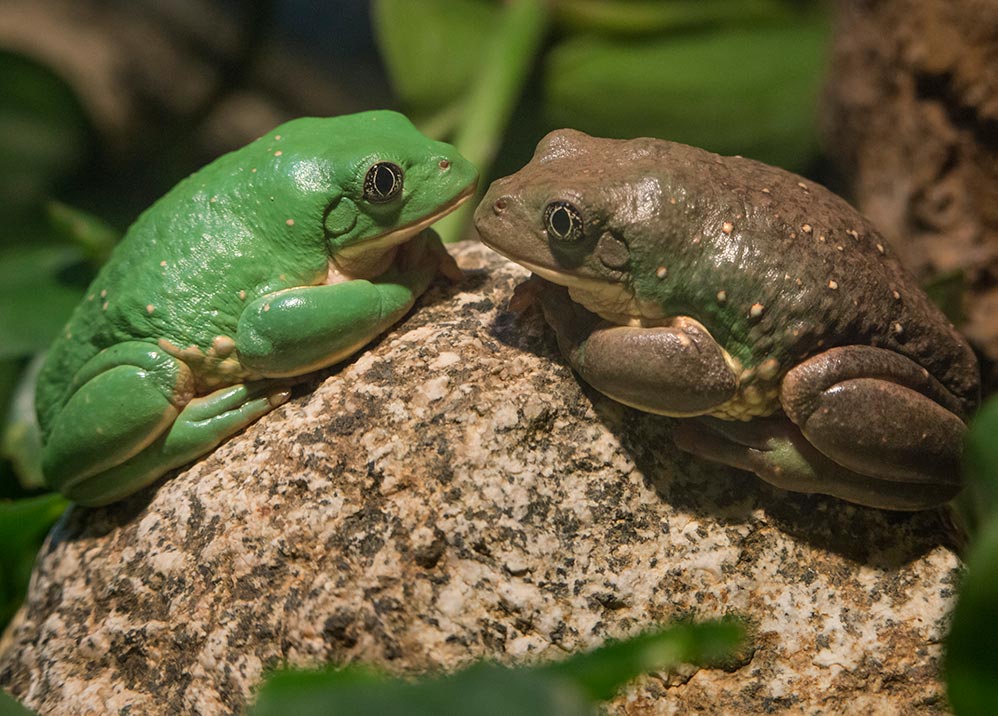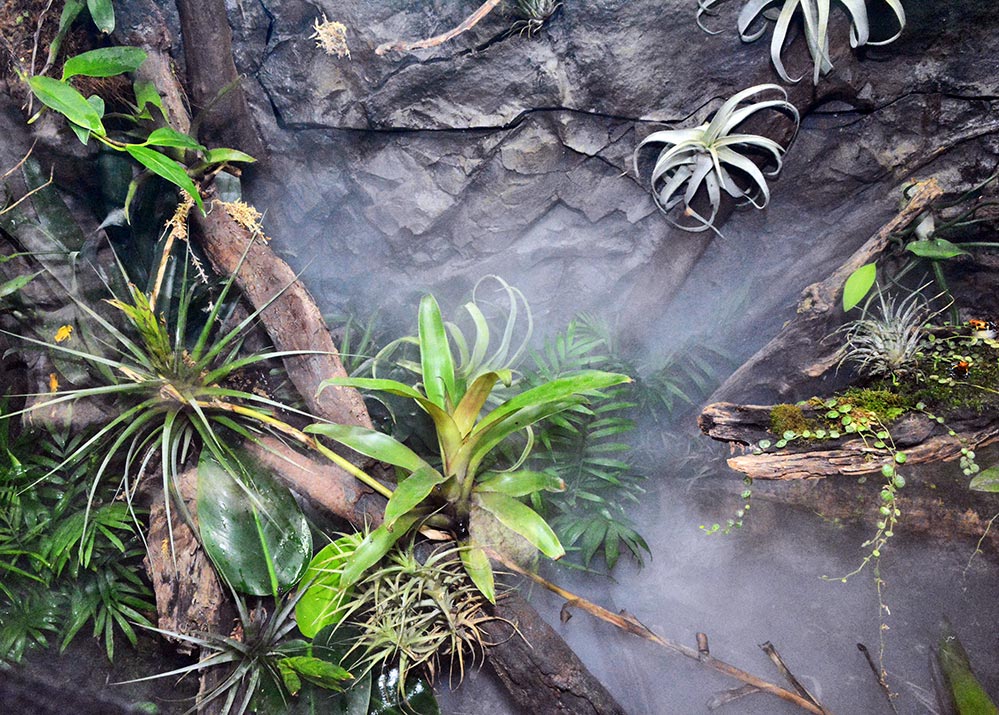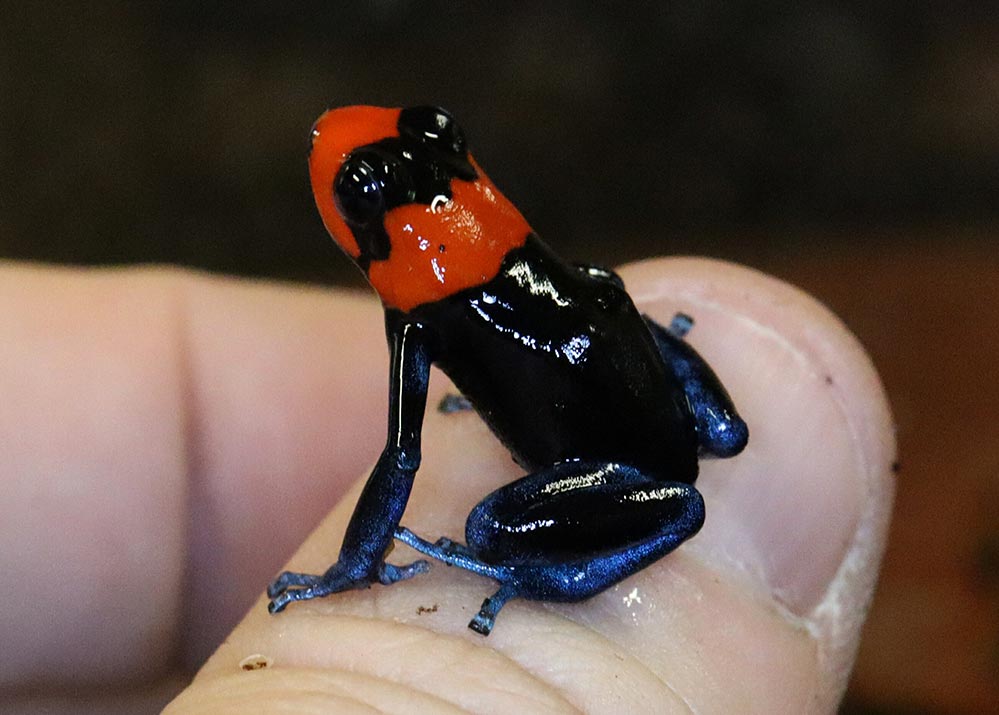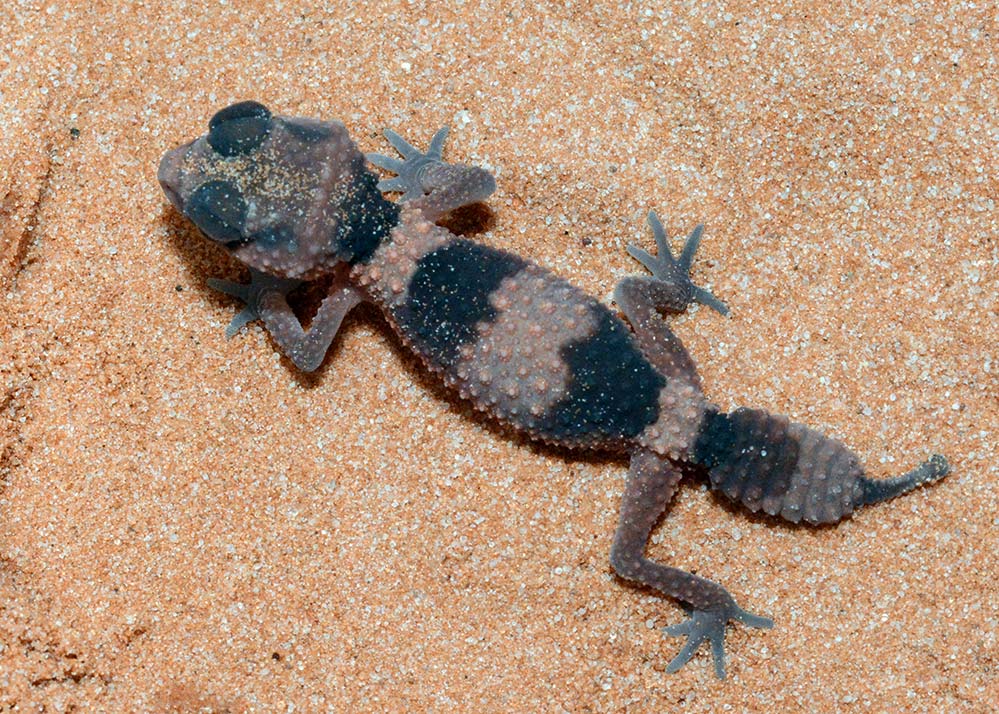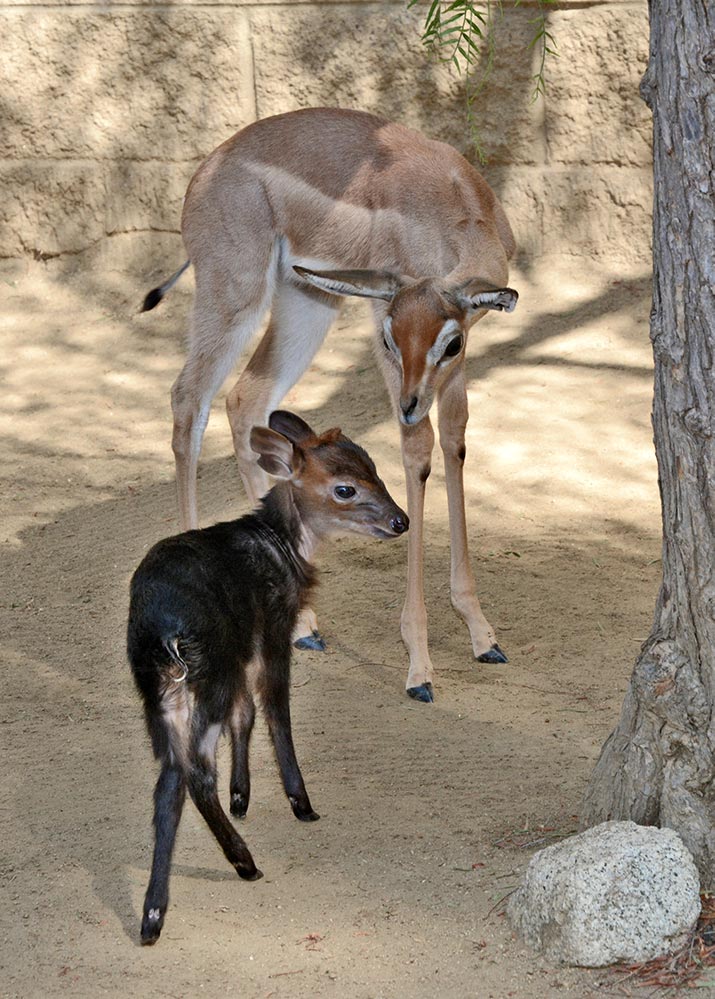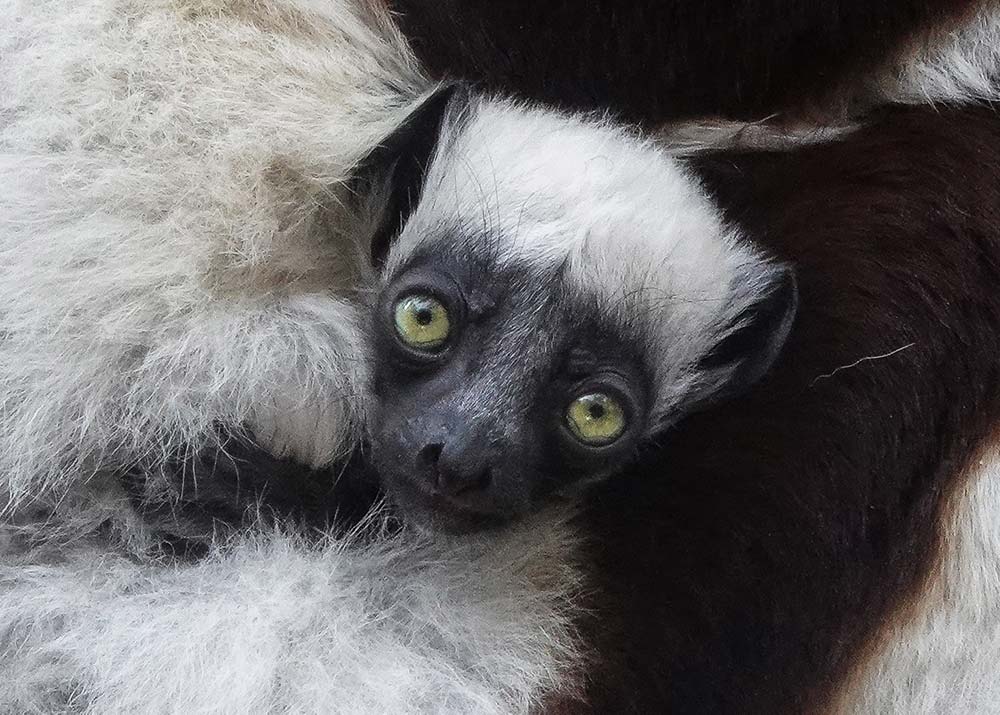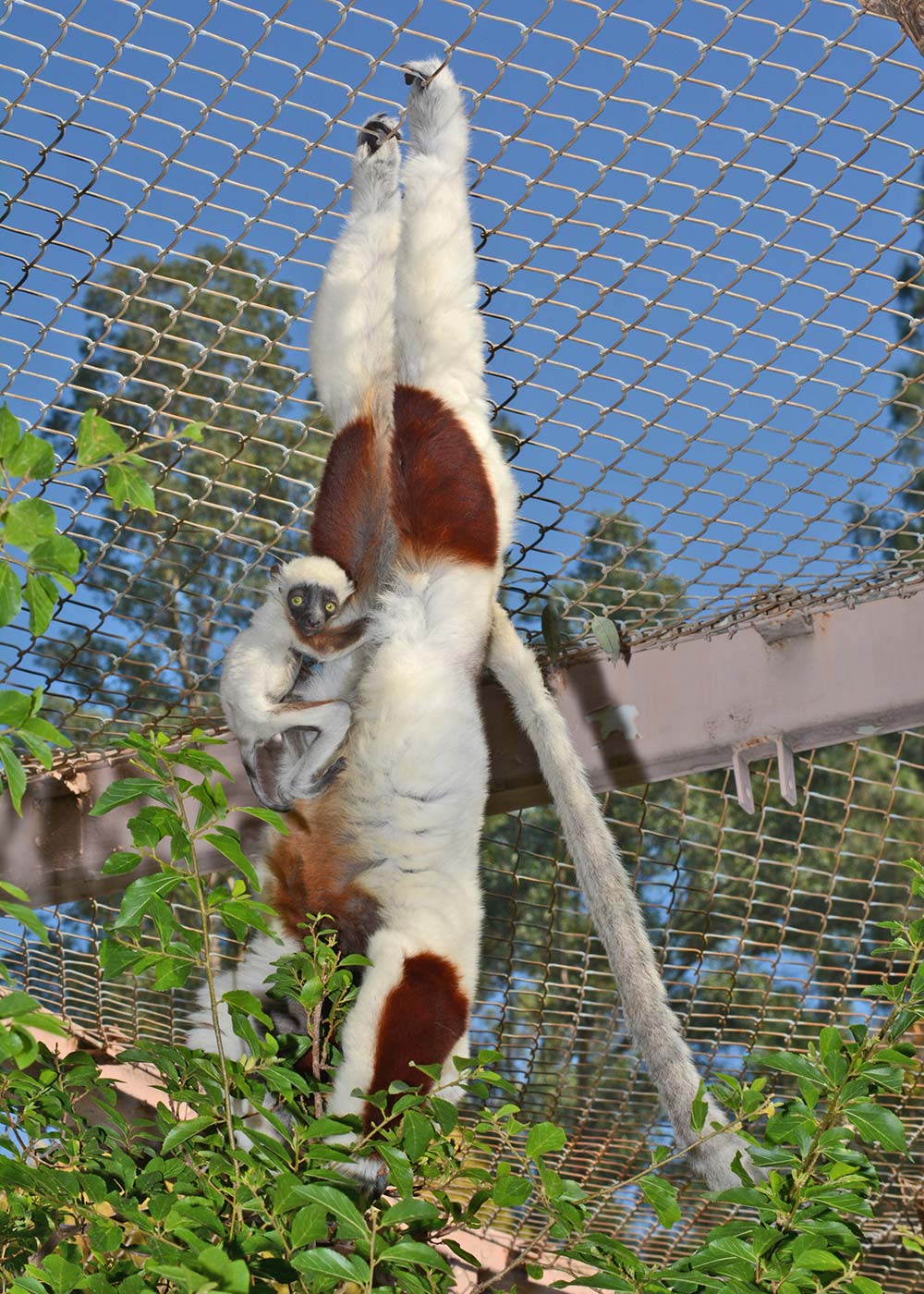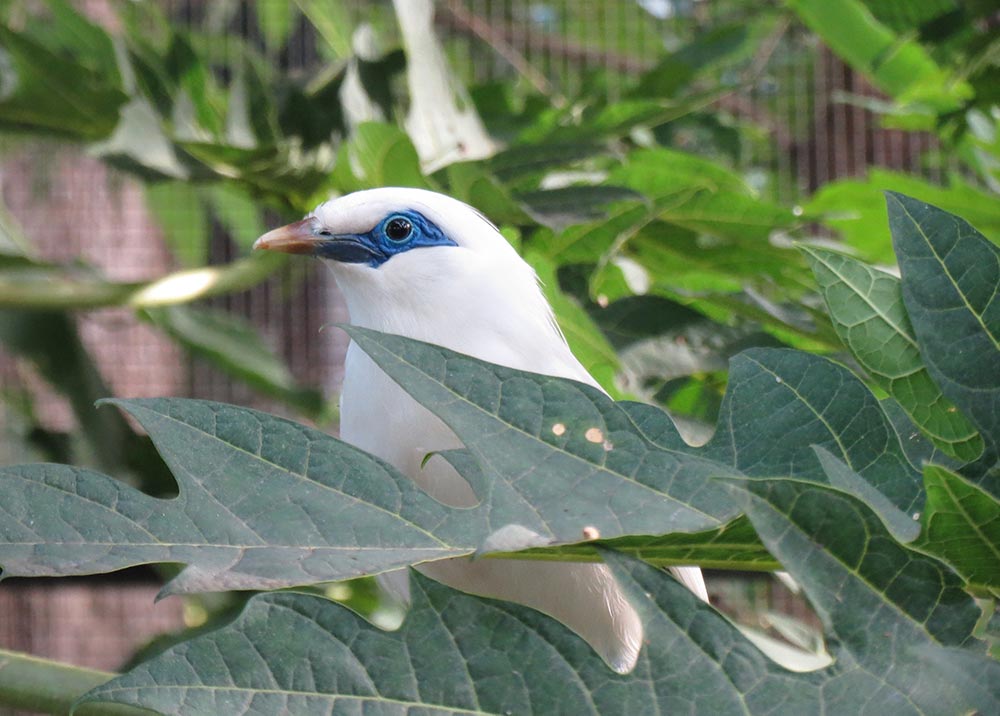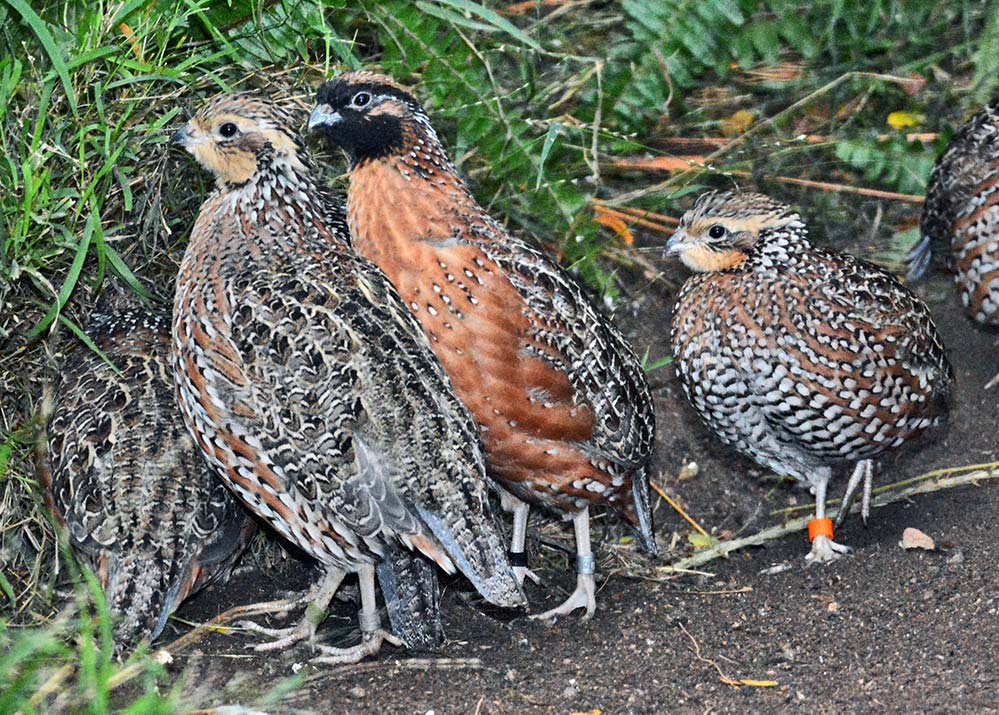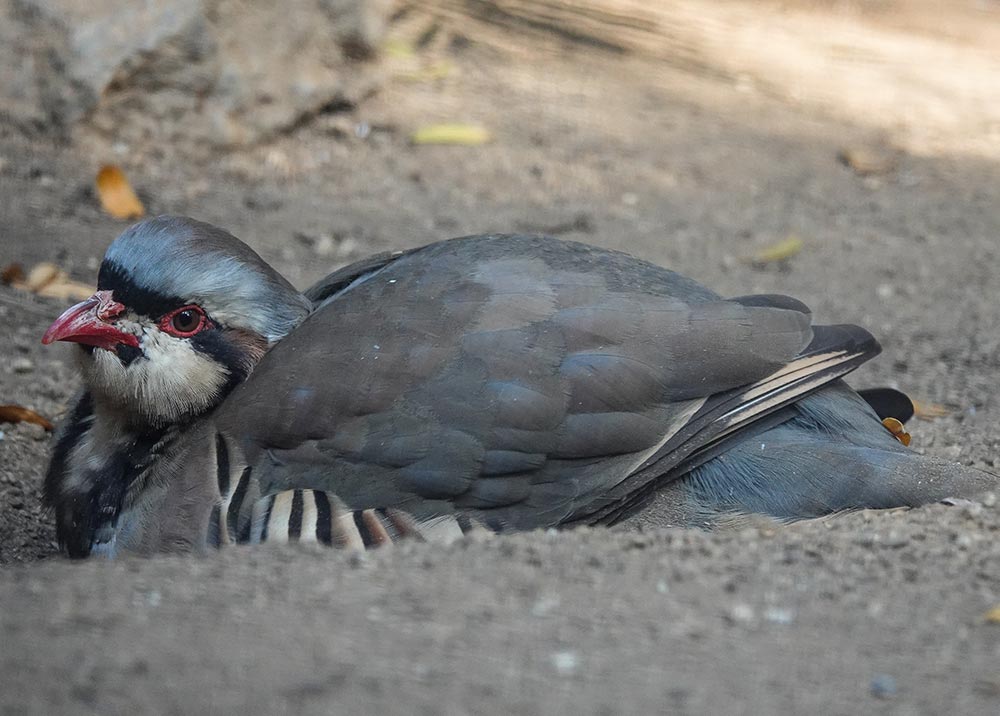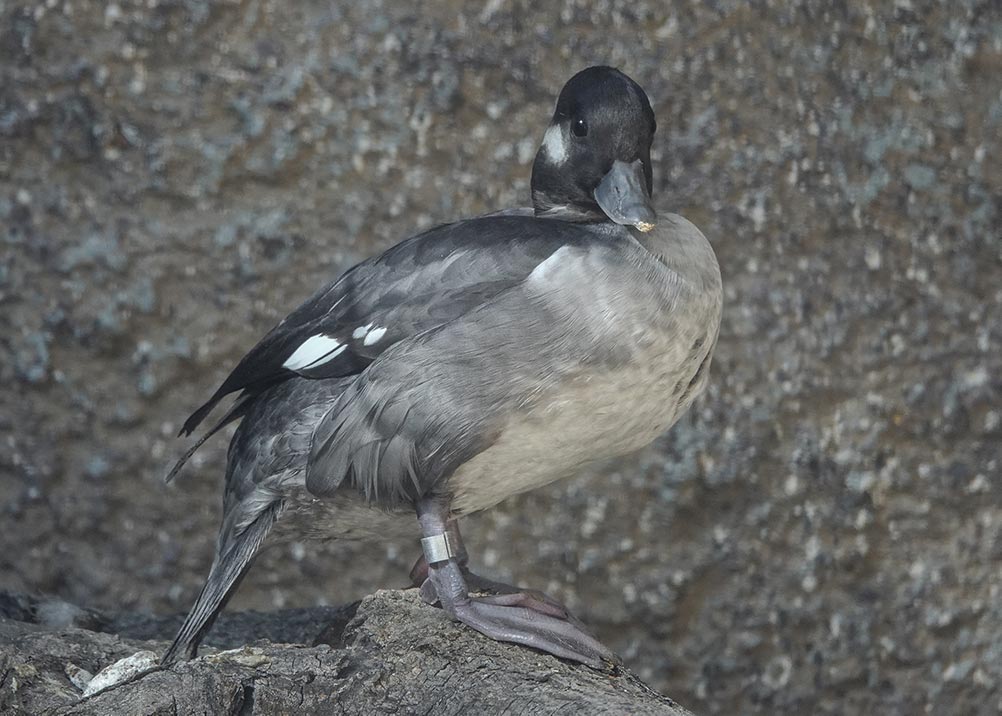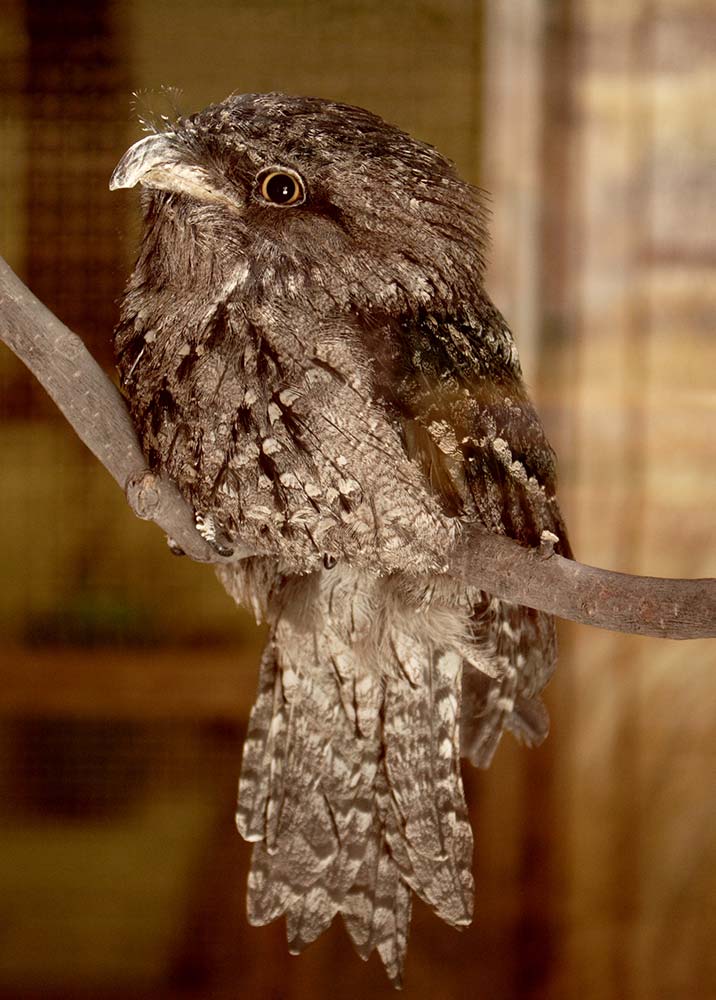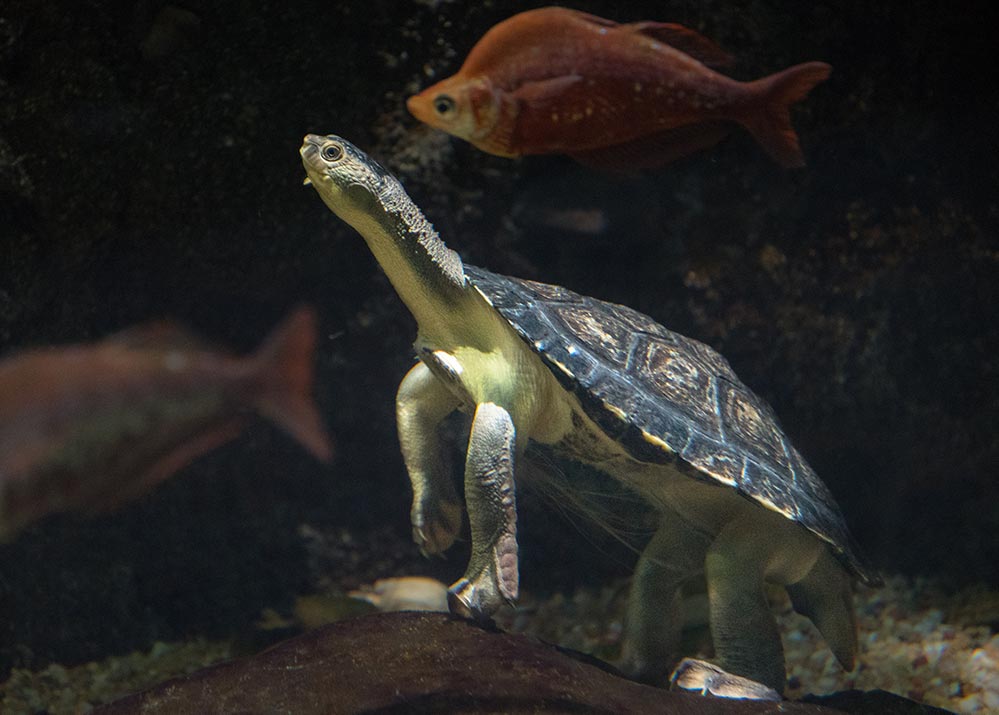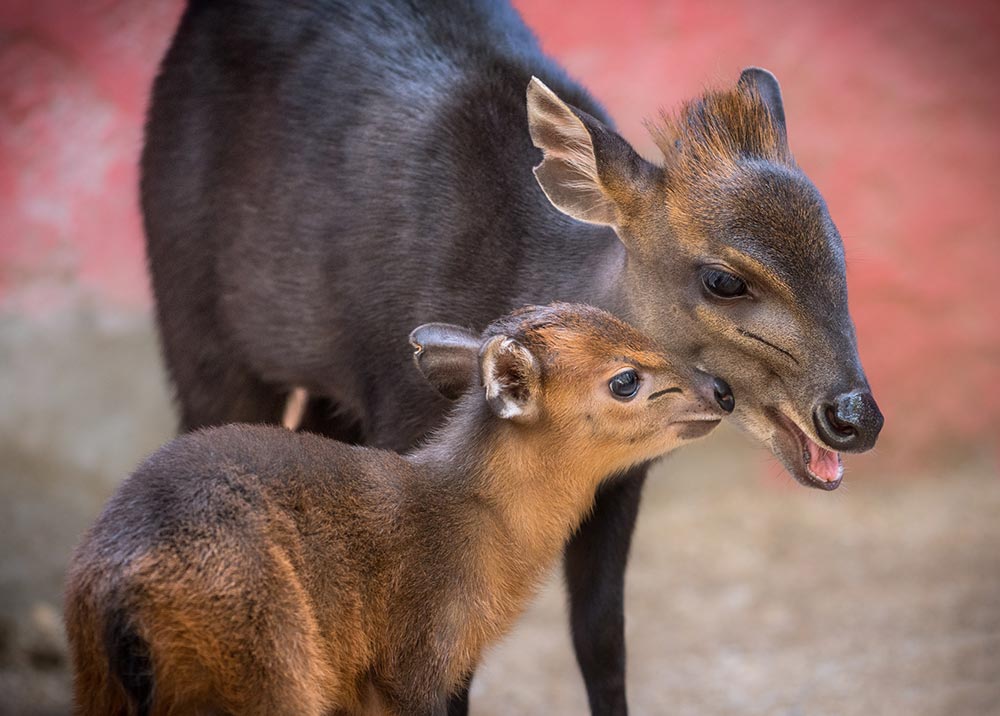NEW IN THE ZOO: A Plethora of Poison Frogs, A Covey of Quail, an Endangered Lemur, and More

L.A. Zoo Lights: Shining Bright, and Cooler Than Ever
October 30, 2018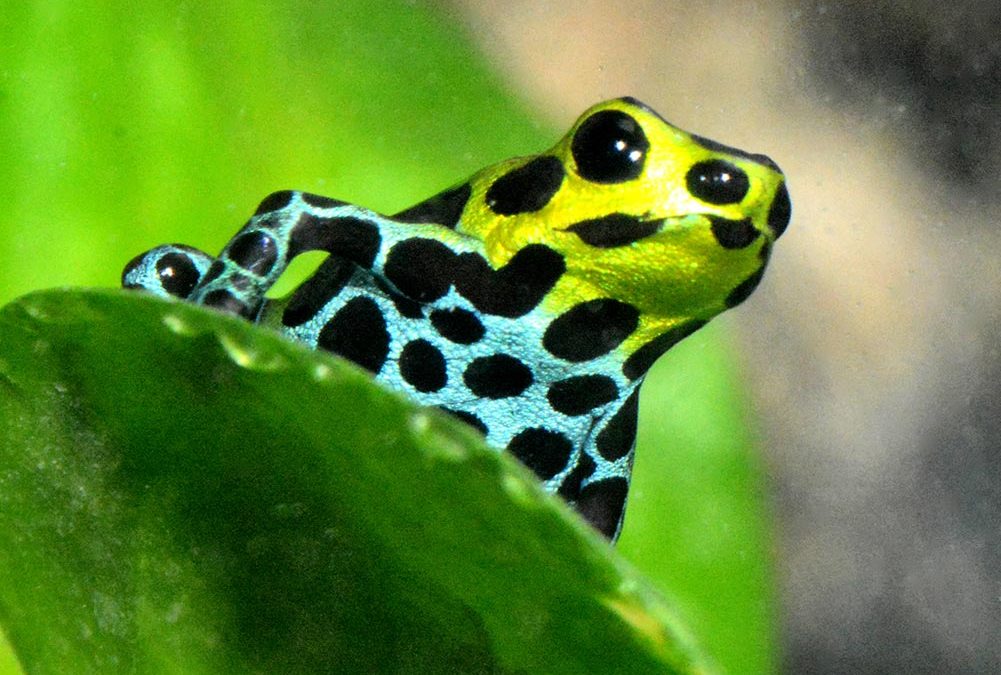
The splash back poison frog (Ranitomeya variabilis) is one of several poison dart frogs in a new Rainforest of the Americas exhibit. Photo by Tad Motoyama
The frog life cycle is familiar to many of us—jellied eggs hatch into guppy-like tadpoles that metamorphose into adult frogs. However, there are a surprising number of variations on this process. In colder habitats, the tadpoles can take up to two years to complete their transformation (as is the case with our local southern mountain yellow-legged frogs). In warmer regions, the period from hatch to adult can be a matter of days—as happened with the Mexican leaf frogs that hatched at the Zoo in 2015. Other aspects of amphibian family life can vary as well—notably parental care.
Some frogs offer none at all. Mexican leaf frogs deposit huge masses of fertilized eggs onto tree branches over pools. As the eggs hatch, the tiny tadpoles rain down into the water below where they rapidly metamorphose on their own. With no adults to protect them, the leaf frog offspring must quickly mature to avoid predation.
With variable dart frogs, the female lays fewer than 10 eggs with an average of four or five, and the male is responsible for ferrying them around and placing them in pools of water, often rain trapped in cup-like bromeliad plants. Once they begin hatching, females frequently produce infertile eggs that the male feeds to the developing young. Also, sometimes the smaller tadpoles are fed to the larger ones, which may seem disturbing to us, but when there are limited resources this behavior offers the stronger froglets a better chance to survive.
Currently, more than 50 specimens representing six poison frog species can be found in the new exhibit. The bromeliads, tillandsias, and orchids that live with them are epiphytes—plants that live on top of other plants in the rainforest, an adaptation that helps them access more light. Photo by Tad Motoyama
On October 4, the long awaited poison dart frog exhibit was installed at Rainforest of the Americas. This habitat has been in the works for about two years and was made possible in part by donor Roz Schrank. Currently more than 50 specimens representing six species are occupying it. Poison dart frogs get their common name from the practice of some indigenous people of using the more toxic species to anoint hunting arrows. The source of the toxins that the frogs secrete on their skin is the insects that make up their diet. In human care, feeding on domestic insects, they are harmless.
All of the plants—bromeliads, tillandsias, orchids, and more—are live and individual frogs have already established their homes in various bromeliads. This exhibit is designed to function as a self-sustaining micro-habitat with a water cycle that includes rain and fog as well as wind. It also features automated controls that mimic natural light cycles. The jewel-like amphibian residents are all native to Central and South America, and although only one species has been designated “endangered,” all are affected by habitat loss and other environmental challenges. So it was good news that ten tadpoles hatched in the off-exhibit reptile and amphibian facility—seven poison dart frogs, one mimic poison frog, and two green-and-black poison frogs.
In addition to the plethora of poison frogs, a pair of knob-tailed geckos recently hatched. These lizards are native to rocky outcroppings in the arid, sparsely populated Pilbara region in northwestern Australia. As is typical for the species, the mother laid a clutch of two eggs that hatched about 24 hours apart.
Another recent hatching of note was four white rock doves, which will join the flock that closes the World of Birds Show.
A black duiker and a Coquerel’s sifaka were born. The sifaka is a species of lemur found in the tropical dry lowland forest of northern Madagascar. Sifakas are exceptional clingers and leapers—they crouch with their long tails curled behind them, then use their powerful legs to launch themselves up to 30 feet from branch to branch. Because of our compatible climate, year-round browse availability, and staff expertise, L.A. Zoo was the first North American zoo to be loaned a breeding pair by Duke Lemur Center. Surprisingly, not many zoos have shown interest in working with this spectacular primate.
At first glance, lemurs appear to be lanky, long-nosed monkeys. But appearances can be deceiving. These unusual creatures actually represent what monkeys might have been had they not had to compete and evolve. Lemurs are prosimians, a group of primates considered to have more primitive anatomical characteristics than the simians (monkeys, apes, and humans). Prosimians are found in Africa and Asia along with monkeys and apes—but they are the only primates found on the island of Madagascar.
Madagascar is the fourth-largest island in the world. In prehistoric times, it was part of the supercontinent Gondwana, but it separated from the mainland some 90 million years ago and is now located off the southeastern coast of Africa, approximately 250 miles from Mozambique. It is a biodiversity hotspot—90 percent of the fauna and flora are endemic, meaning they occur nowhere else on earth.
The Zoo’s bird staff have long been hoping to breed the highly endangered Bali mynah. A male Bali mynah arrived in September and will be paired with the female who came to the Zoo from the Asian songbird confiscation last year. This pair will be housed in the off-exhibit Avian Conservation Center, which offers the quieter, more secluded atmosphere they need.
Twelve masked bobwhite quail are currently in quarantine. They will eventually share an exhibit space with the greater roadrunners and chukar partridges. This species is North America's only endangered quail. It was first discovered in 1884, and by 1900 it had disappeared from the U.S. The combined pressures of intensive livestock grazing and drought contributed to its decline. Its historical range stretched from southern Arizona into Sonora, Mexico. Wild populations persisted in Mexico throughout the 1900s and early 2000s and some may still exist there today. Biologists with the U.S. Fish and Wildlife Service (USFWS), universities, nonprofits, and the Masked Bobwhite Recovery Team are working to preserve existing populations and hopefully return captive-bred birds to the wild. USFWS has a stable captive population at their facility in Arizona but they are asking Southwestern AZA zoos to hold the species as well to ensure there are several populations in case of a local catastrophe. We hope to breed these birds in the future, but their offspring would be sent out to populate other zoos.
Other avian arrivals included a tawny frogmouth and two bufflehead ducks. The tawny frogmouth may move in with the kookaburras next to the Australia House or settle in at the Avian Conservation Center. The buffleheads will join the scarlet ibis, sunbittern, and black-necked stilts in the mini North American waterfowl aviary across from the greater roadrunners.
Two Mary River turtles arrived from Australia. Few zoos house this species and these youngsters will become part of a future breeding effort in the Zoo’s off-exhibit reptile facility, but you can see other Mary River turtles in the aquarium at the LAIR.
Finally, a red-flanked duiker arrived from the Charles Paddock Zoo in Atascadero, California. The L.A. Zoo has enjoyed a very long and successful breeding record with these small woodland antelope and often exchanges individuals with other zoos in order to ensure genetic diversity. Currently, our red-flanked duikers are living in an off-exhibit area near the Grevy’s zebras.


